Mert: When did you start to go back to the old photos and manipulating them?
Zeynep: I can say that this is a more of an aesthetic concern, to return to the series of "Seğmenler Park" - almost to the very beginning. I didn't like the first versions of the photos I took. The blurry, textured photos that I had attained by taking the photos of the old images repeatedly were more "beautiful" for me. This has turned into a technique that can advance me. But the technique that I'm going to use is changing every time.
Mert: Well then, do you think about how you will manipulate a photo in the future whilst the moment you are taking it?
Zeynep: At first, it was exactly like you asked, but it changed a bit over time. Even at first, almost 10 years ago, I knew that the photos I took would never stay that way. At that time, I was telling my friends that were modeling for me, when I took photos of them, like, "Look, this is not going to stay this way". It's like saying I'm going to refine their waists on photoshop or something, but I wasn't talking about something like that; and when I took the same photo, again and again, it was alienating from its first state. I have always known that. Now it's not like this, it's more complicated. Photos can stay in their first state, too. For example, I did not intervene after I took the photos in "Constructed" for the first time.
İpek: It seems to me that we can divide your work into two periods: before and after the work "Tele Phone". Before "Tele Phone", it seems like a more intuitive research period, an open door to accidental results. But after "Tele Phone" we can talk about a more conscious work practice. At this point, where does this consciousness stand while working on a project?
Zeynep: It depends on what you mean by "consciousness". The word "consciousness" makes me think of someone who is sure about what he/she is doing. Considering this, even though it is an older series than "Tele Phone", "Torn" may have a consciousness in this sense. Actually "Torn" has an absurd story: when I was getting ready to return from the Netherlands to Turkey, I have put all the test prints that I was working on for a year in a garbage bag in front of the door. When I got away from the house and came back, I saw that the bag was ripped, the photos were spread all over the street, and I was so scared! I decided to collect all photos from the ground and tear them up one by one before throwing them back in the trash. Then I wanted to record these shreds somehow, and when I came back, I kept doing this even though it wasn't with the hurry of that day.
On the other hand, in my the oldest, more film using series, as you say, there is a pursuit of how I could put together random things. I still think that some kind of consciousness exists in different stages of the production process, perhaps in the decision to continue. For example, when I was working on photos and videos that I have burned last year, I did it with such a persistence and for a long period time that I remember I was feeling like smothering in the studio. I was searching for a feeling that something will be exposed when the photographs were burning, but I don't know this is what you have meant by consciousness.
İpek: Consciousness may not be the right word. For example, sometimes, as you say, you have an idea and you focus on it from the very beginning. But sometimes you see the images coming together at the end of a process. In your works, we see the whole process, not only a two-dimensional photograph in the final.
Zeynep: I was very happy to hear this! I think that I could not reflect the process as I wanted it to. I have thought I could accomplish this by the work; "Untitled Original: to (Re)Create ‘New' from the ‘Old'". But it was a presentation-performance, and I was showing the different states of the same photo one after the other. At the same time, I was repeating Jean Tinguely's manifesto (that he had handed out by a plane from the top of the city at an exhibition opening in Düsseldorf in the 70s) as I remembered after reading it. The Manifesto praised the change, the movement against stasis. This was a series of speeches arranged by ACAW in New York, and the year I joined with Zilberman the topic was "Thinking of Performance". Of course, as I have explained, I have been able to share the process directly, but I also attach great importance to be able to do so without a presentation.
Mert: By the way "Untitled Original: to (Re)Create ‘New' from the ‘Old'" is one of the rare works that you used a text.
Zeynep: It could be the only one actually. There is also a sound recording of the sentence; "We are looking for something to burn or smother, or be tumbled" that is heard in every ten minutes in the exhibition of "Constructed".
Mert: There is something I want to ask about this. With the case that of the change in your working process which İpek mentioned; that you also put the photos in a series of scenes and shoot again in "Constructed". These scenes are seemed to be mostly random as if you were looking around and stumbled upon them, but they are undoubtedly staged scenes. This creates a sense of coincidence. In this sense, the name is also quite guiding. Do you think about a lot before giving a name to your works?
Zeynep: No, actually. I give names based on what is often visible. For example, in "Spin", I've compared the hole in the middle of the photos with a rotation movement. In "Experiments with Glue" I was really experimenting with glue. And in "Torn", there are torn pictures. Only in "Constructed", there is a trick in the name. I was thinking something similar to what you have explained: scenes staged in every detail, but at the same time they are "caught" moments.
Mert: Did the importance given to the name increased over time?
Zeynep: Actually, my mind is still working the same way. For example, in the last exhibition process, I came across a book named: "Let's Drink a Glass of Rain Water". I was very impressed and I was wondering if it could be the name of the exhibition, but this name was a little bit too weighty for me comparing to my previous works. In fact, there is an intuition in all series, but there is also a technique, method, action, and movement that excites and stimulates me while I'm working. That's why I'm finding it easier to name something when I have a relationship between the name and the technique. Like, "Studies for staying in the middle, or changing quickly from one state to another" for example. I decided to try some movement repetitions using my body in Zilberman's guest artist program in Berlin. I recorded these videos while watching myself and the cardboard sheets that were lying in the studio, and the photos emerged from the scenes of the video. Sometimes I was controlling the cardboard sheets, and sometimes I was keeping up with them, but what I was trying to do was staying in the middle, the name comes from here.
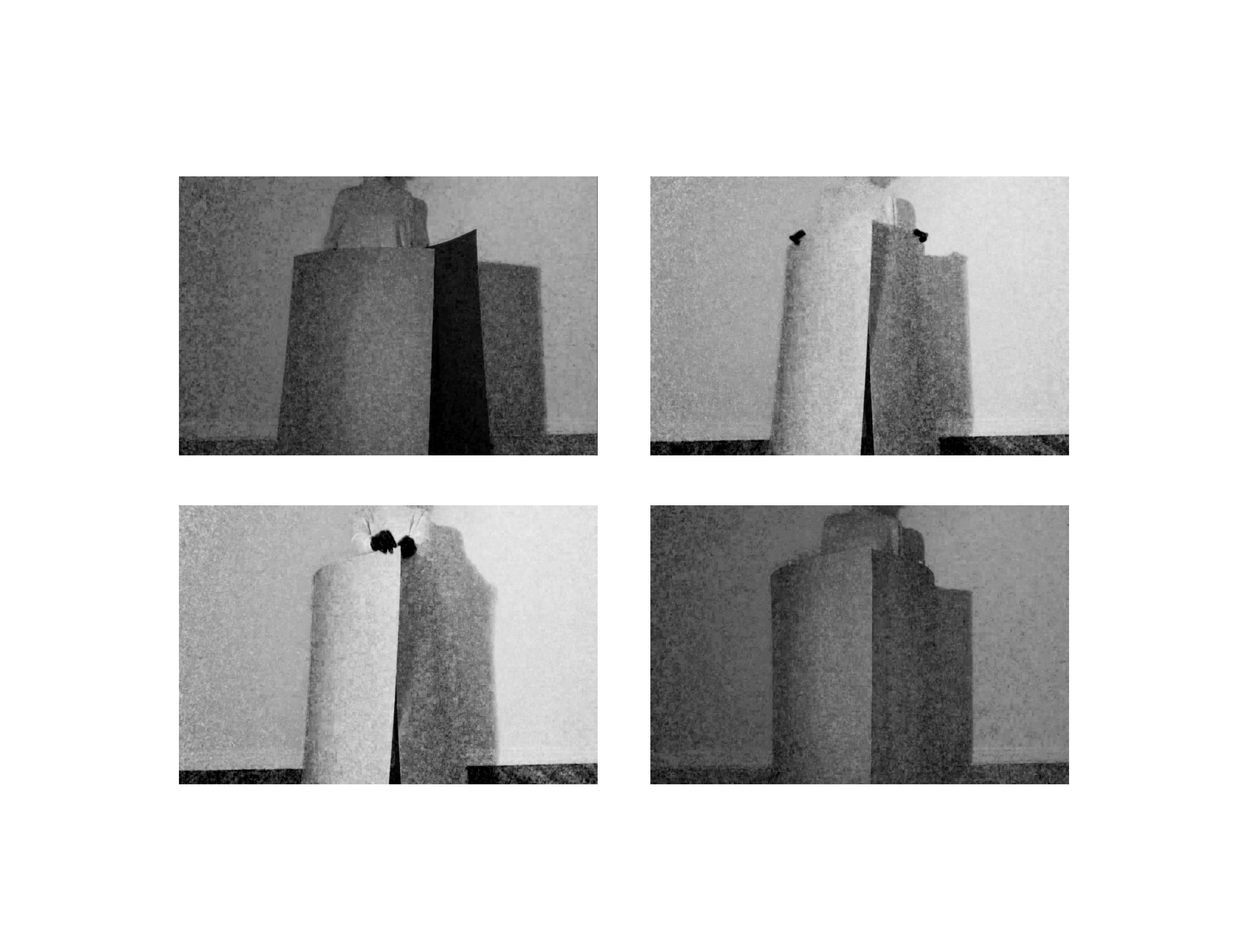
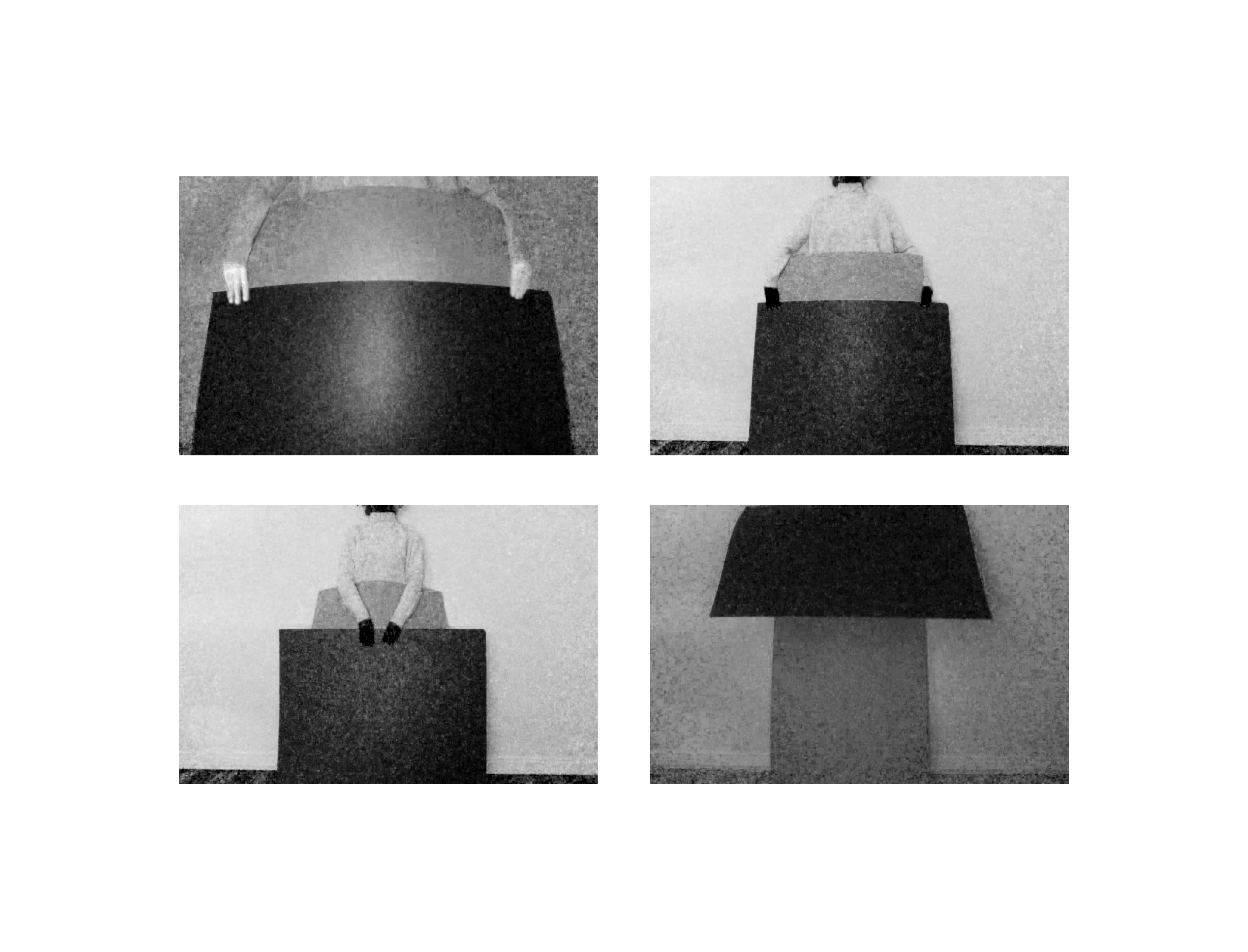
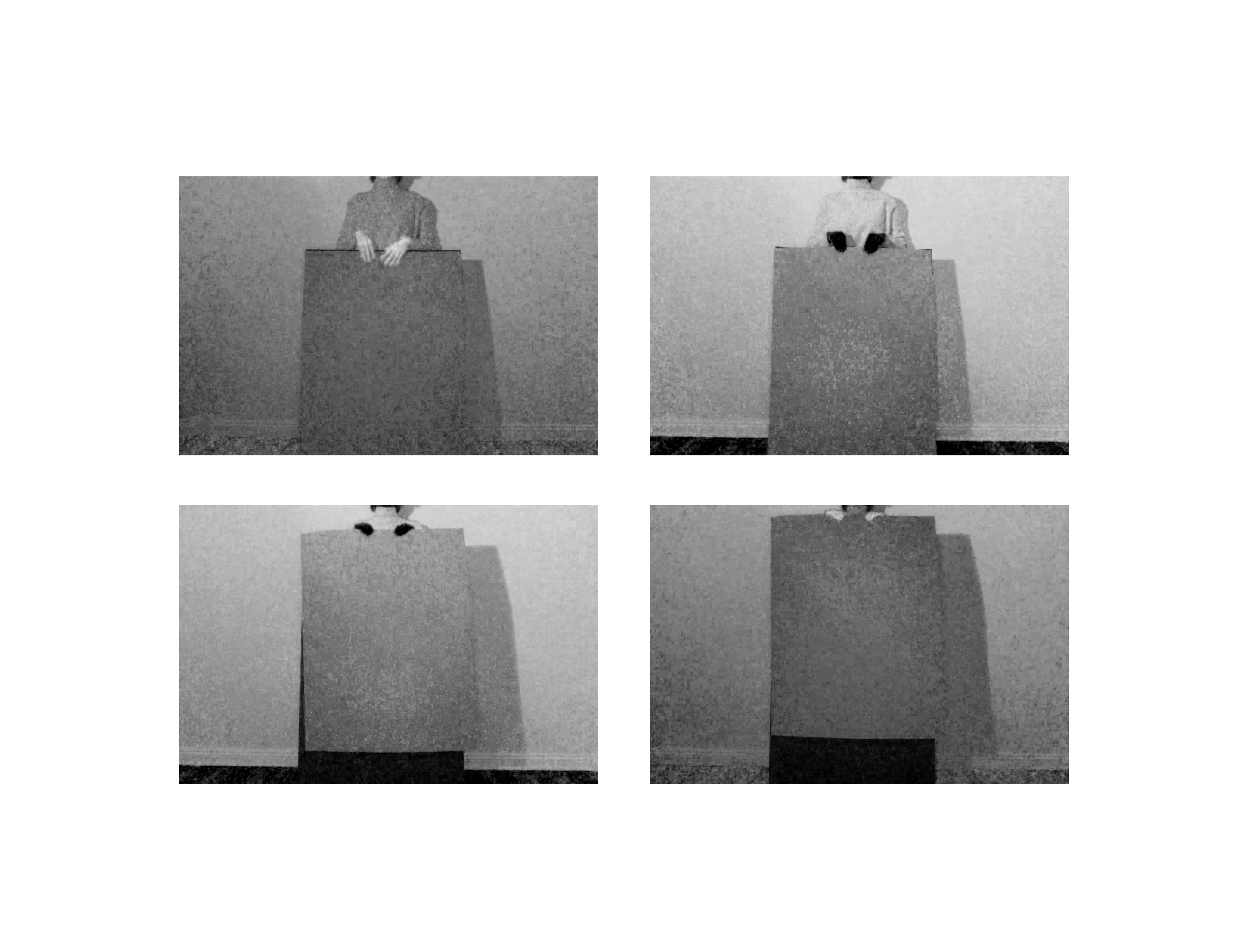
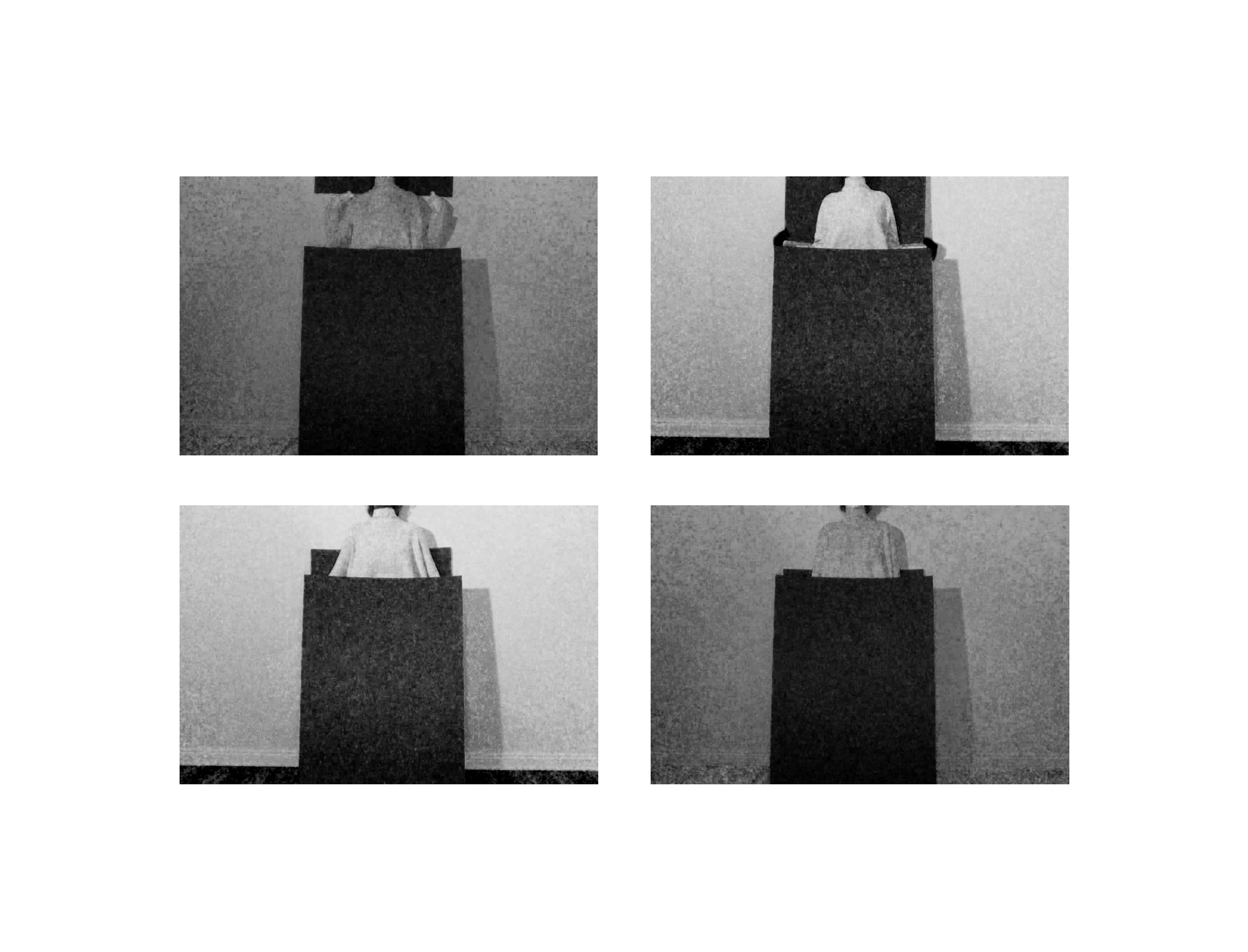
Mert: Placing a photo that is physically worn out in a scene/ notebook, and including the physical features of that scene in a photograph; adds a history to it and also a story. This can be seen in the "Constructed", "Torn", "Experiments with Glue". That's why it made sense to me that you didn't want to use text. In fact, did your way of using photographs became more narrative because you didn't want to use text in the first place?
Zeynep: It doesn't work like this in my head. I don't think like, "What I should do to avoid writing a text?". In fact, the text that is a part of the work, and the text trying to explain the work is two different things. The first one does not appear in my mind usually, and sometimes I have a hard time to write a text explaining the work, I get help from people I trust. Also, for me, the process of production is more like a discovery than trying to create a story. I mean; I don't get excited every time I look at an old work; I realize that I was excited for a time and that excitement brought me to a new point. I care about the technique but when I look back, I see that there is not much in the technique itself, it only triggers me when I work as I mentioned before.
Mert: And while you build this narrative, do you make an effort for everything that you put in it to have a history enough to be in the work?
Zeynep: Answering this question is a little bit hard for me because I'm about to start something new right now. The process is different every time and it takes form when I spend time with photos. If I'm not concentrating on an entirely new series, I have this way of working: I've been looking at all the photos I've taken since 2004. For example, I'm currently browsing in the 2009 file. In these files, there are photos that I was shooting for experimentation at the time, also there are memoir photos. This is a very simple process, but when I look at the past with what I have in my mind today, I sometimes notice something that I've never noticed before and set it aside to print it. Then a new idea can emerge from those I've separated for printing. Of course, this does not happen overnight, it goes on like this for a few months in a row. For example, my mind is now trying to improve the logic of "Studies for staying in the middle, or changing quickly from one state to another". On the other hand, I'm intrigued by a dancer named Trisha Brown. She dances like this: 1, 1-2, 1-2-3, 1-2-3-4... She keeps doing the same thing in a different way, accumulating, and somewhat confusing. To summarize, I think I'm always looking back to find how can I proceed from there.
İpek: This is the starting point of a project of yours. I'm wondering about the end point. Considering that your work is based on repetition/ accumulation/ research processes and the fact that these processes are never-ending, how do you decide that a series is over?
Zeynep: But you get bored. You see that you have enough. For example, in "Constructed", the starting point was to use the flash for the first time, as well as try to treat the photograph as an object instead of manipulating the surface of it. For a long time, I placed the photos in different places and continued to shoot again, after a while, I've tried this with a projector. I think this last phase was the beginning of "getting bored".
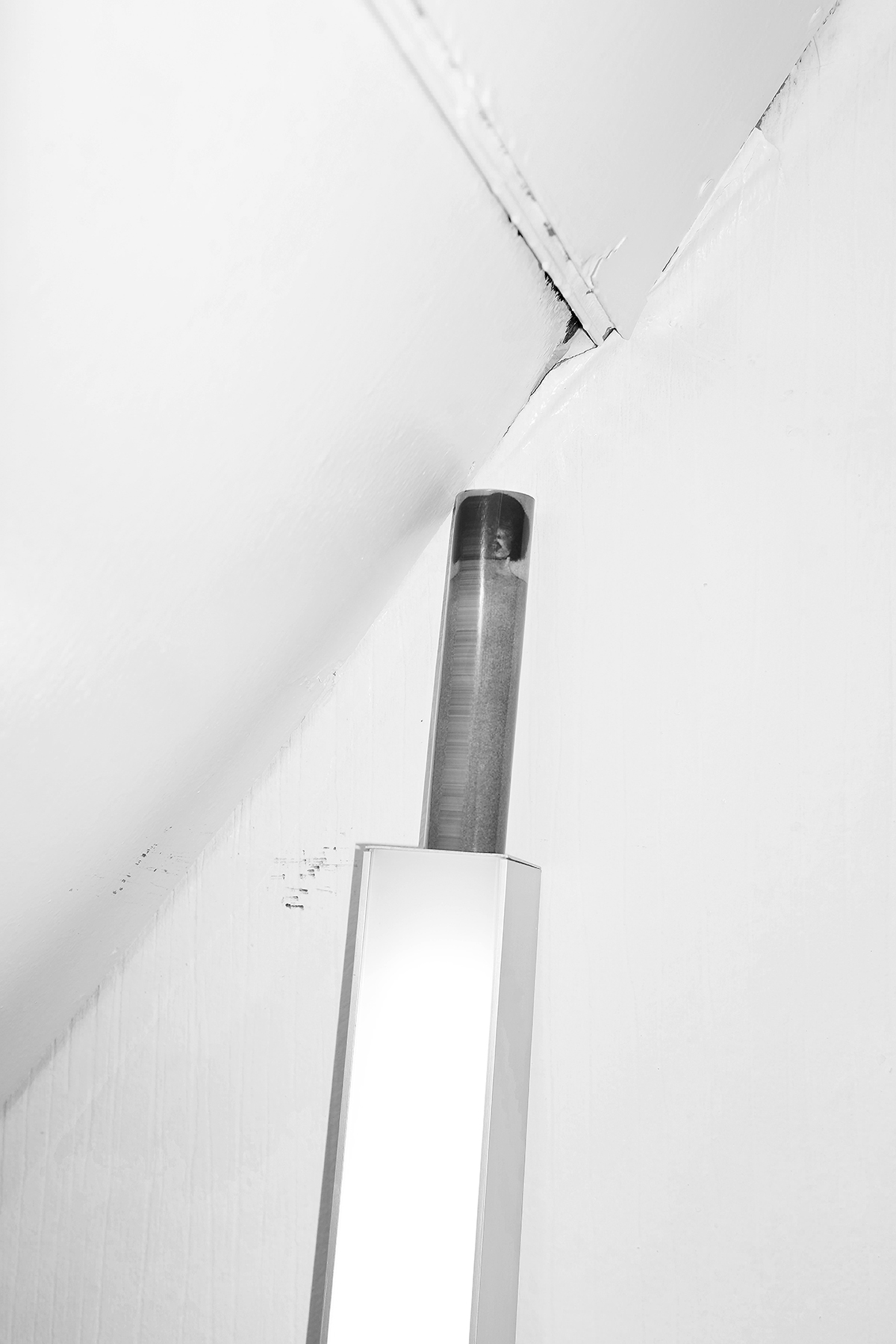
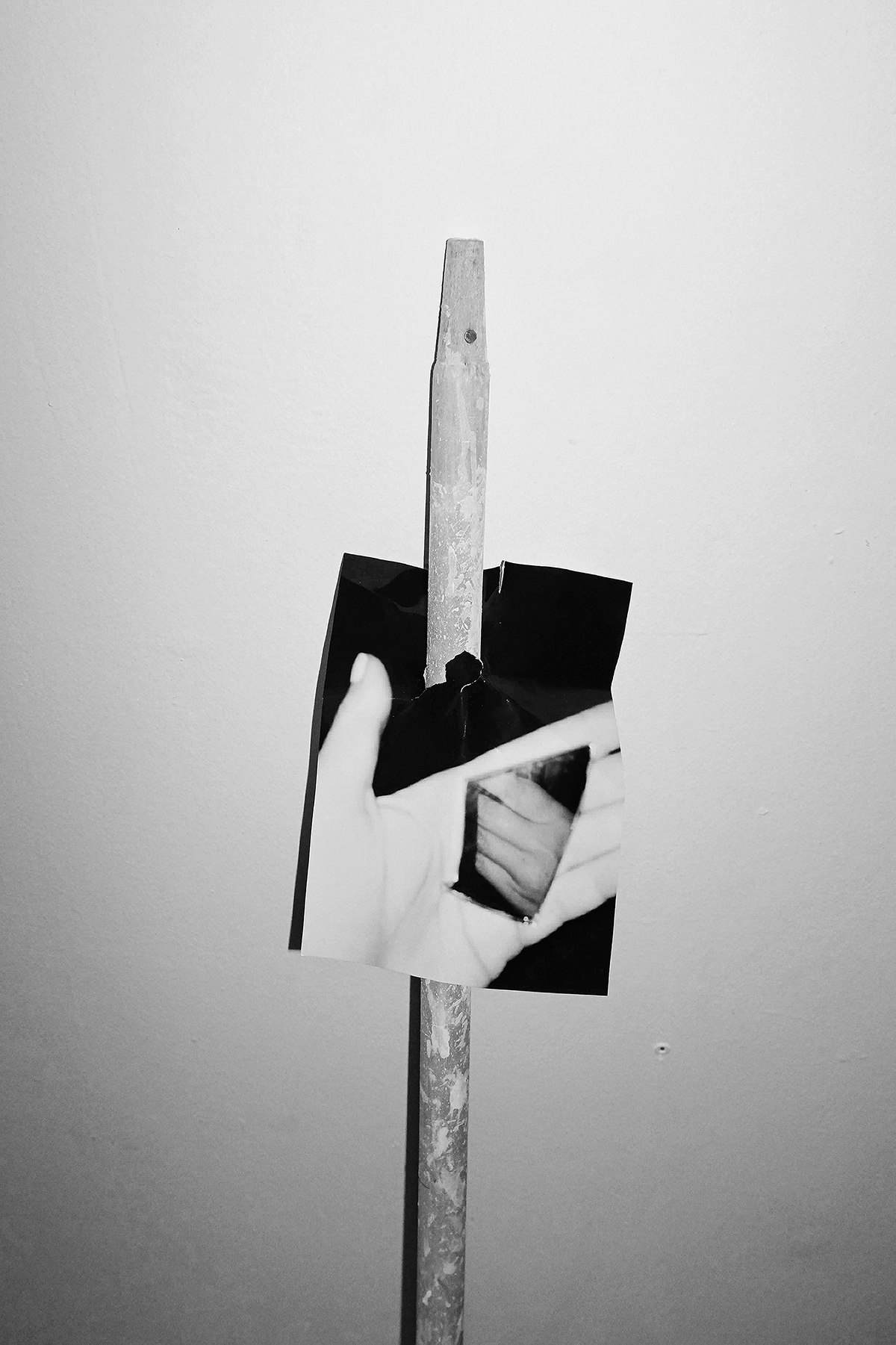
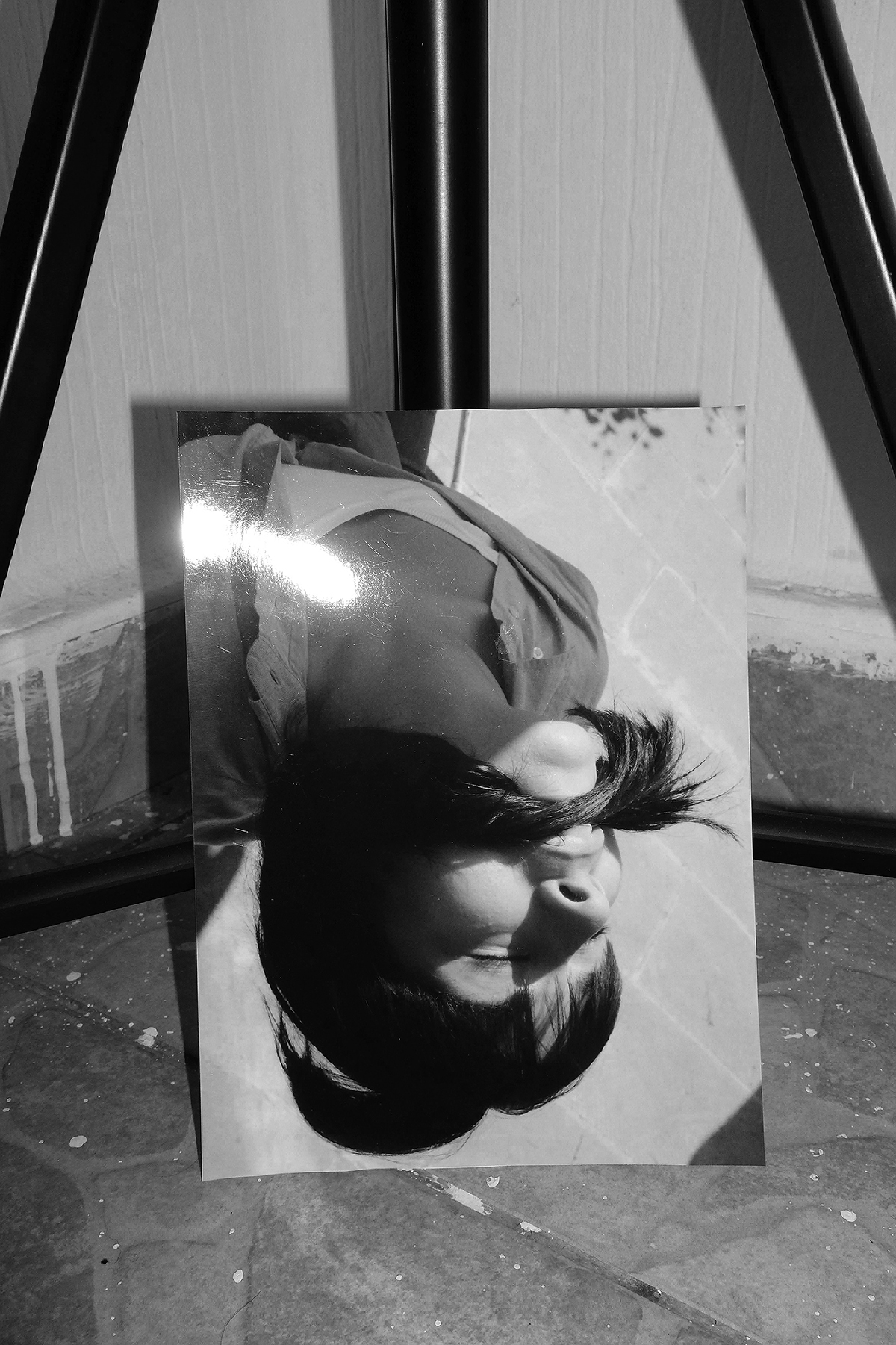
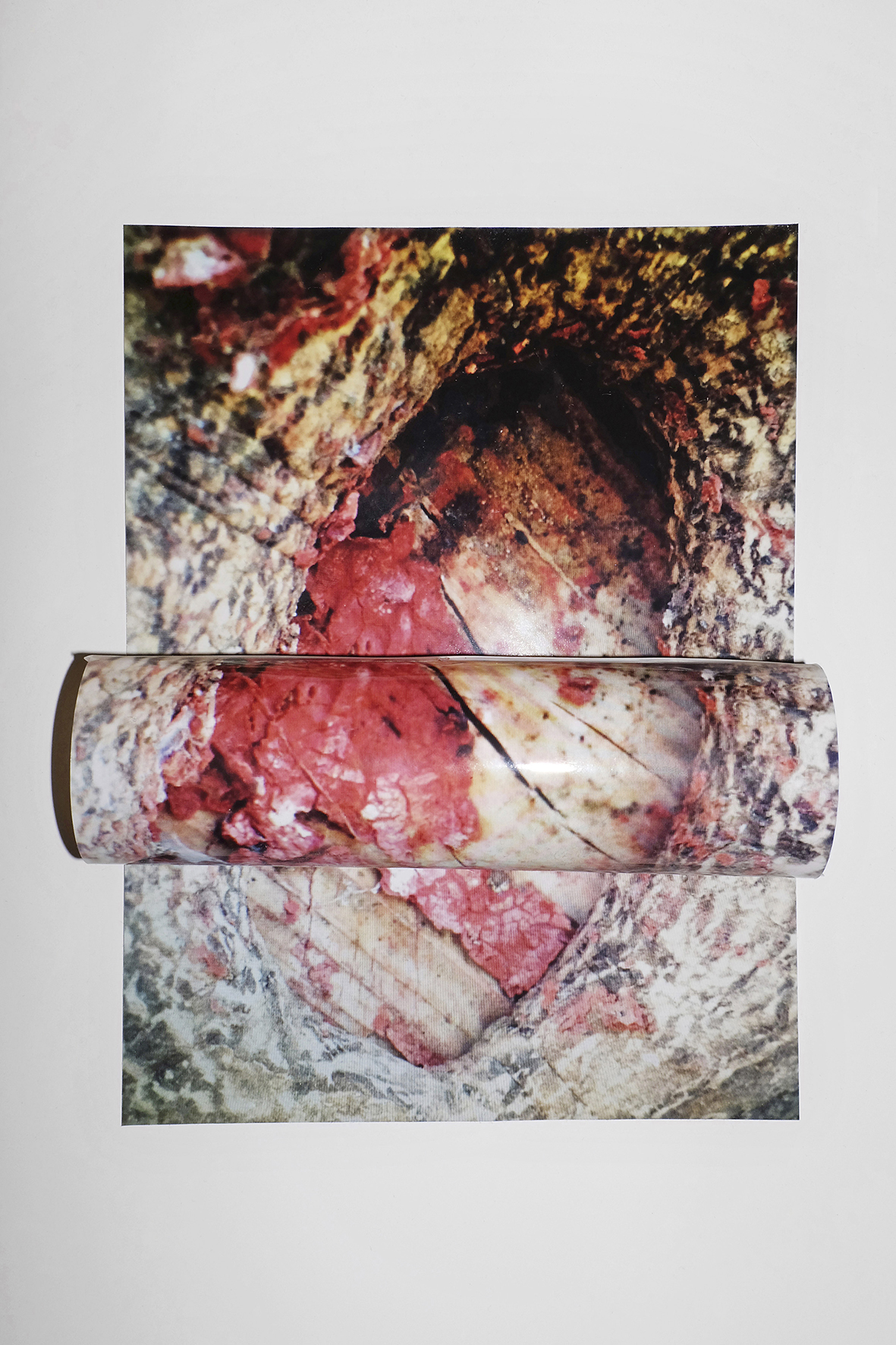
Mert: When you finish a work and become distant to it, do you prefer to review it, or how deep do you think when others do? For example, does it make you think about how people will read into and react to your next work?
Zeynep: I think it's a natural process to look back and understand better what you do when you become distant from a finished job. But I don't like being open to external influences. Especially in the production process, I care about continuing my work more than just talking or thinking. After the long periods of time that I've spent with the photographs sometimes I don't want to open this relationship to the external world.
İpek: Talking about this made me think about an interview you gave together during the course of the exhibition called "We Are Downstairs" with Burcu Bilgiç. Ali (Taptık) asked a question on the technical similarities/ differences between Yokota and your photographs, I'm borrowing his statement. Both of you have a very high incentive to manipulate the photography. But in Yokota, there is a systematization/ formulation of the technique he produces. In your work, without relying on formulating; there is a learning and retraction status. So I don't feel the systematicity and the coldness of the formula. That's what I have meant by when I was saying that we were seeing the story of a continuous process in your works.
Zeynep: It makes me very happy to hear it! What you have mentioned, this retraction status, makes you feel depressed until you can be excited about something new, but the other way around is also frustrating in a different way. I mean, I can't imagine going back to shooting a photograph in a scene, just like in "Constructed".
Mert: If we make a comparison with you and Yokota -on a technical basis- in Yokota we see something that we have never really seen before; we encounter something visually interesting rather than a story. But there is a narrative you've strengthened - rather than something visually interesting - in your work. In this sense, establishing "Tele Phone" as a starting point makes sense. Because "Tele Phone" is your first work that the narrative has revealed its importance by the arrangement of the photographs.
Zeynep: "Tele Phone" consists of the photos I took with phone. For me, it was a strange, erotic state brought by both the using of the flash and the need to get close. On the other hand, they were working as pairs since the beginning. So before I joined the bookmaking workshop that RVB Books organized in FUAM, I was looking at the accumulated photographs with the dream of a book. I also think "Tele Phone" stands apart from the other works, because there is no intervention except to bring the photos together, and the narration and arrangement - that you have mentioned - are more prominent.
İpek: Let me ask you a direct question then. Would you like to talk about the book process? Because even that I think after "Tele Phone" things started to change, "Tele Phone" is like the skyline, it's not included in either side.
Zeynep: Another reason for me "Tele Phone" photos exist as pairs is that they've had a stronger meaning when they came side by side. When this duality also attracted RVB Books' interest in the workshop, it was easy to proceed together. Merely, bird photos that I wasn't initially thinking about including to the book, have been added. The oddities in the position and the gaze of the birds matched the photographs of the rest of the book. All of them are actually a bit absurd, a little erotic, maybe a little uncomfortable as well.
Ipek: Does Instagram also have an effect on "Tele Phone" and "Constructed"?
Zeynep: There isn't any effect on "Constructed". "Tele Phone" is the opposite. I was already uploading the photos to Instagram because I was taking them with my phone. Then they began to accumulate there, and it kept me fit every day to meet this cumulative. What I mean is, it was like feeding on my own rhythm, not on sharing them on Instagram. In fact, I used to share photos in DeviantArt and Flickr, which is not very different.
İpek: I have a final and personal question. The photos you are manipulating are not unique photos, photos which are easy to reproduce. But sometimes you make the manipulation on the same photo rather than on a new photo.
Zeynep: I like this situation. Actually, it's not something I've planned, and only after some time that I realize I'm working on the same photo. As a result, I understand better, how the photo got far away from itself and what happened or can happen to it.
For example, I have two versions of a photo with dried Turkish coffee, the first version is in "Tele Phone" and in the book, and the second version which is reflected on a mirror by a projector is in "Constructed". It must have been almost a year and a half to get there. Maybe another version is going to emerge from that same photograph again, but I don't know now.
İpek: The thing that I enjoy about your work is: the photo becomes anonymous, becomes non-spatial, but at that moment - as Mert mentioned - it gains a new past. This is a combination that is hard to achieve in photography.
Zeynep: Yes, I think using the same photo in different series in different ways also confirms this. A process that takes place without being aware of it and it gives me a feeling of endless experimentation.
Mert: When you look at a photo you took in the past, how much do you feel alienated and how does this affect the production process?
Zeynep: I think I naturally feel alienated after some time. Once a friend of mine said that I might be creating an atmosphere while working by returning to the past. Actually, he was talking about a mood; maybe a little melancholy, releasing how you feel about the past. Of course, I may encounter photos that I have never remembered taking or remembered differently. Sometimes this causes a very productive day; sometimes I feel numb as if I was looking at someone else's photos.
Mert: I have one last question. It's about your videos. Mostly, I found the video work that you did very different from the photos and I had quite a hard time going through them. In general, photographers are more likely to use videos in a static way. I was able to understand the videos in "Constructed" more because they seemed in the direction of general narrative.
Zeynep: I don't think so. Of course, I can't group all the videos in the same way, for example, videos in "Studies for staying in the middle, or changing quickly from one state to another" are working in a different way. In "Constructed", almost all the videos are available as photographs for different reasons. For instance, I was excited to see the process and the results side by side as I was thinking about the photographs I burned together with their videos of them burning. Mug video is like a spontaneous photograph, it moves, but it's very minimal. I mostly think that videos and photos move together or complement each other.